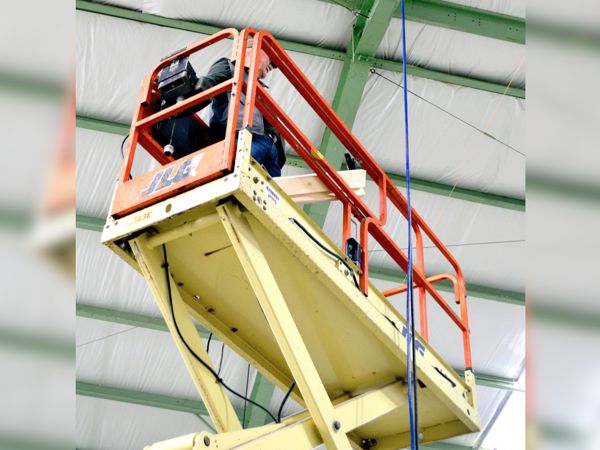Scissor lifts are essential tools in modern industrial operations, providing a stable and elevated work platform for various tasks. These lifts are commonly used across industries like construction, retail, entertainment, and manufacturing. Unlike aerial work platforms, scissor lifts utilize a crisscross mechanism to elevate the work platform vertically, which gives them their distinctive name.
Due to their unique design, scissor lifts often fall under OSHA’s Scaffolding standards, emphasizing the importance of proper safety measures during operation. Despite their robust design, scissor lifts present specific risks, primarily falls from the platform and the possibility of tipping over. Collapses in the cross beams are extremely rare, provided operators adhere strictly to manufacturer guidelines and service the equipment regularly.
Leading brands in the scissor lift market today include JLG and Terex’s Genie. These manufacturers offer a range of models designed to meet diverse operational needs, with maximum working heights ranging from 25 to 50 feet.
A scissor lift essentially functions as a mobile scaffold, enabling workers to access elevated areas safely. Platforms are typically 24 to 36 inches deep and 48 to 72 inches wide, capable of supporting one to four individuals depending on weight limits. Each model has specific specifications regarding maximum height and load capacity, so it’s crucial to review these details before use.
The lift can be controlled either at the base or on the platform. While the ability to move while extended offers convenience, it also introduces additional risks—many manufacturers advise against maneuvering the lift when it’s in an elevated position.
Source: OSHA
Before operating a scissor lift, it’s vital to conduct a thorough assessment of the worksite and identify potential hazards to choose the right equipment for the task. Scissor lift operators must evaluate and implement controls addressing fall protection, stabilization, and proper positioning. Only trained personnel should be authorized to use scissor lifts.
Guardrails are mandatory on scissor lifts to prevent falls. Most manufacturers install top and mid rails along the platform’s perimeter, allowing workers to attach lanyards and harnesses. Some models come with extendable platforms that require additional attention due to their rope-based rail sections.
Notes: Falls from scissor lifts are a common hazard. To mitigate this risk, consider attaching a body harness to the guardrail. Always prioritize safety over convenience.
Operators must confirm the scissor lift is stable and won’t tip over or collapse. Inspect the floor to ensure it’s level and solid. Most scissor lifts require a flat surface, though some rough terrain models can handle uneven conditions.
Notes: Always be cautious when moving the scissor lift, especially when extended. Avoid obstacles and high-risk areas to minimize accidents.
Operators must position the scissor lift carefully to avoid crushing or electrocution hazards. Crushing injuries can occur if the lift moves and traps someone between it and another object. Electrocution risks arise when the lift extends into live electrical lines. Even if the lift or worker doesn’t directly touch the line, electricity can arc dangerously close.
Electrical arcs pose additional risks, as they can leap from power lines to the scissor lift or the operator. Always maintain a safe distance from overhead power lines.
Notes: Always be mindful of your surroundings when operating a scissor lift. Accidents can happen quickly, so vigilance is key.
#Material Handling
#Construction
#Toolbox Talks
#Scissor Lifts
Traction Sprayer,Traction Pneumatic Sprayer,Traction Compound Sprayer,Sprayer Traction Control Gongzhuling Huaxi Agricultural Machinery Manufacturing Co.LTD , https://www.hxzbjx.com
Notes: The scissor lift derives its name from the "scissors" mechanism that raises and lowers the platform. This design ensures stability and reliability during operation.
General Safety Measures
Fall Protection
Stabilization
Scissor lifts can tip over if they encounter uneven surfaces, are struck by moving objects, or collide with obstacles while extended.
Positioning
Group Discussion Topics
Find Similar Articles By Topic